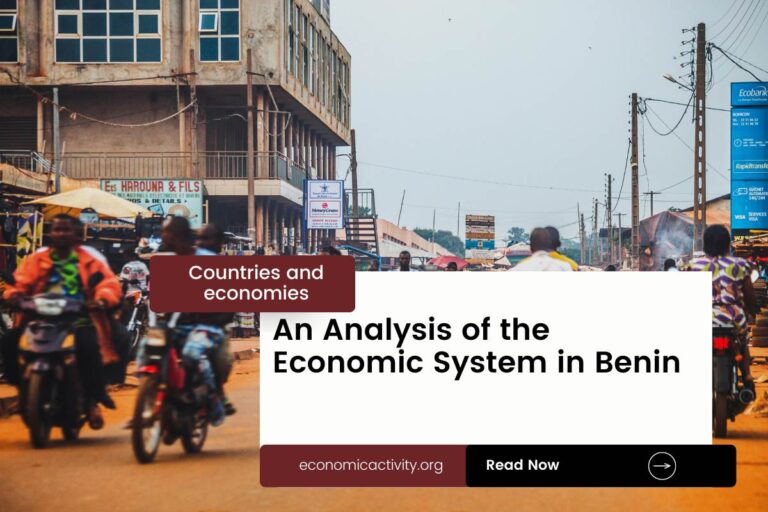Libya, with a population of 6,812,341, is ranked 102 in population size, just behind Nicaragua. Located in North Africa, it covers a total area of 1,759,540 square kilometers, ranking 16 in size, just below Sudan.
Libya, with a GDP of $45,752,336,035.98 in 2022, holds the 91st rank globally. It follows Tunisia, whose GDP stands at $46,303,552,449.35. In terms of GDP per capita, Libya ranks 95th with $6,716.10. It is surpassed by South Africa, with a GDP per capita of $6,766.48.
Despite challenges, Libya’s economy shows potential for growth and development, with opportunities for diversification and stability in the future.
What are the economic activities of Libya?
- Primary activities: 1.3% of GDP.
- Secondary activities: 52.3% of GDP.
- Tertiary activities: 46.4% of GDP.

Primary Sector of Libya
The primary sector in Libya, particularly agriculture, thrives due to its favorable climate and natural resources. With 8.72% of the land dedicated to agriculture, the country produces a variety of crops and animal products, including potatoes, watermelons, tomatoes, onions, dates, milk, olives, chicken, wheat, and vegetables.
Despite contributing only 1.3% to the GDP, agriculture plays a crucial role in providing food security and employment. The diverse range of agricultural products underscores the sector’s significance in sustaining the country’s agricultural economy.
With a diverse geological landscape, the primary sector thrives on abundant natural resources like petroleum, natural gas, and gypsum. These resources play a crucial role in driving the economy through exports and revenue generation.
Libya’s gas production reached 11.6 billion m³ in 2020, securing its position as the 39th largest natural gas producer globally. This significant output contributes substantially to the country’s economic activity, further bolstering its export potential and revenue streams.
Secondary Sector of Libya
What is the secondary sector or what are secondary activities?
The secondary sector encompasses industries that transform raw materials from primary activities into finished products for consumption. In Libya, key industrial products include petroleum, petrochemicals, aluminum, iron and steel, food processing, textiles, handicrafts, and cement. These goods are manufactured for domestic use and export, contributing significantly to the country’s economy.
In 2023, Libya’s manufactures exports accounted for a minimal percentage of the country’s total exports, indicating their limited significance in driving the economy.
Tertiary sector of Libya
What is the tertiary sector or what are tertiary activities?
The tertiary sector in Libya encompasses various services where individuals provide knowledge and time to enhance productivity and meet needs. This sector involves intangible goods such as advice, expertise, and attention, catering to both consumer and business-to-business services. Key tertiary activities in Libya include healthcare and medical care, education and training, banking and finance, communication and information exchange, tourism and hospitality, and transportation and logistics.
Highlighting these, Libya’s tourism sector is relatively insignificant, with a low number of annual arrivals compared to its population. The country’s challenging security situation, underdeveloped infrastructure, and limited touristic attractions have hindered tourism growth, making it a minor contributor to the overall economy.
Another example of tertiary economic activity is the mobile cellular sector, which boasts approximately 14 million subscriptions, equating to over 200 per 100 inhabitants. This extensive connectivity fosters technological growth and innovation.
International Trade of Libya
Import Activities of Libya

Libya’s import activities are of high importance, accounting for 42.18% of its GDP in 2023, totaling $19.3 billion.
Libya’s major import activities include refined petroleum, cars, garments, broadcasting equipment, and tobacco. The country’s top import partners are Turkey (15%), China (12%), Italy (12%), Greece (10%), and UAE (7%).
Exports Activities of Libya

In 2023, Libya’s total exports reached $36 billion, accounting for 78.68% of its GDP, indicating a high level of dependence on export activities, crucial for economic stability and growth.
Libya’s export activities are primarily focused on exporting crude petroleum, natural gas, gold, refined petroleum, and scrap iron. The country’s main export partners include Italy (26%), Spain (10%), Germany (9%), China (7%), and France (6%).
Libya economy challenges in 2024
Libya, an upper middle-income country in North Africa, faces economic challenges in 2024. With a 31% contraction due to COVID-19 and an oil blockade, government spending is reduced. The central bank had to devalue the currency, and public wages exceed 60% of expenditures.




Leave a Reply